Corey Gearhart left Chicago almost a decade ago. During the early 2000’s, Gearhart built a prominent reputation in the city’s art community for producing cerebral and evocative performances with a raw physicality. The COMP Magazine recently caught up with Gearhart to chat about his move to Michigan, his collaborative work with his partner Stefanie Cohen, the fleeting nature of performance, and what might make Detroit worth a visit for those interested in contemporary art practices.
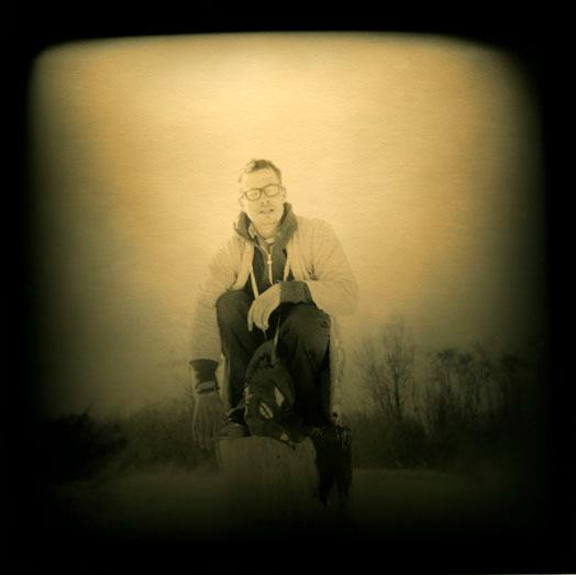
Sun RA project, 2010, photo by Lisa Steichmann
You’ve made a rather healthy transformation in your art practice and life since your relocation from Chicago to Ann Arbor. Can you share with us your recent evolution? Has the focus of your work shifted? If so, how and why?
I left Chicago because of relationship and mental health issues. In a lot of ways I was just tired of the grind of being an artist. My family had a farm outside of Detroit and that seemed like a healthier place for me to be than Pilsen. The family farm gave me the opportunity to try out ways of being in the world that didn’t have much to do with art. I tried to start a business which failed. I spent a lot of time alone walking in the marsh that was across the street from my family’s property. I got a chance to just be and maybe to look at how I existed in the world as a person and not as an artist.
I started going to the local Contact Improvisation dance jam in Ann Arbor because I had been interested for some time in that form. Of course this meant that I ended up meeting other artists but it was not an attempt initially to start making art again. I met my future collaborative partner (later my fiancé) at these jams. It doesn’t seem as though I can get away from making art. Stefanie and I started to produce work under the name “Upended Teacups”.
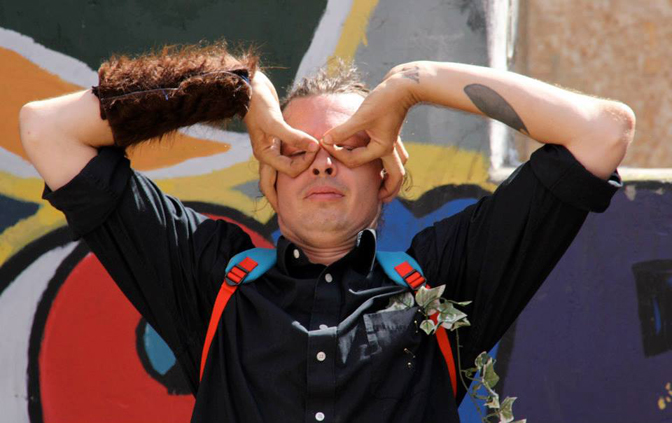
From “We” Sidewalk Festival, Detroit, Michigan, 2013, photo by Michael McIntyre
In terms of the focus of my work, it includes going backwards and forwards as far as tactics are concerned. I often think of our collaboration as a laboratory in which we try out the processes of other artists or forms that we find interesting. This can include creating dances from all appropriated source material, a la experimental dance or devised performance, as well as workshopping ideas of training. We’ve been talking about looking at how stand up comedy techniques might be used — really whatever pops into our heads, we can do. With our first few pieces we didn’t feel as constrained by whether or not they were “good.” So, I think that the shift that happens by moving out of major metropolitan areas is a feeling of freedom.
We have started working more and more in Detroit which again has a more professional art community — to say, that once again I’m surrounded by people educated at art schools. Like us, however, a lot of our friends/colleagues have chosen to be in Detroit as a place with perhaps a different, more spacious quality of life. This may be the myth, but we’re trying it on.
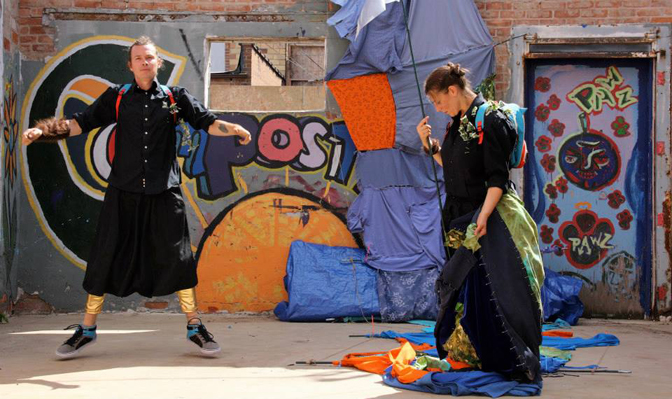
“We” Sidewalk Festival, Detroit, Michigan, 2013, photo by Michael McIntyre
You have been working with Stefanie Cohen (your partner) in recent time. Can you provide an overview of the performance collaboration “Upended Teacups”?
Stefanie and I began making work together after both being invited to participate in a symposium at the University of Michigan called “Arts and Bodies”. We started improvising in Stefanie’s movement studio. Our studio practice gave us the opportunity to skill-share. My background was from a fine-art performance art tradition and Stefanie’s in improvised dance, somatics and theater. I was interested in dance as a place to inspire physical practice. Performance art was one way to use the body but it seemed to me as though dance had answered some of the same questions, so to actually work with someone who was a trained mover was very appealing to me. Stefanie, who had been performing with a dance collective she worked with remotely and intermittently was really interested in developing work more intensively over a longer period of time; also in the kind of object work that I did. Our work together draws on our backgrounds and gives us the opportunity to explore things through the lens of both “trained” and “untrained” and to experiment along the way. Together we have created longer performance installations in festival settings as well as more contained works in evenings we’ve shared with other artists.
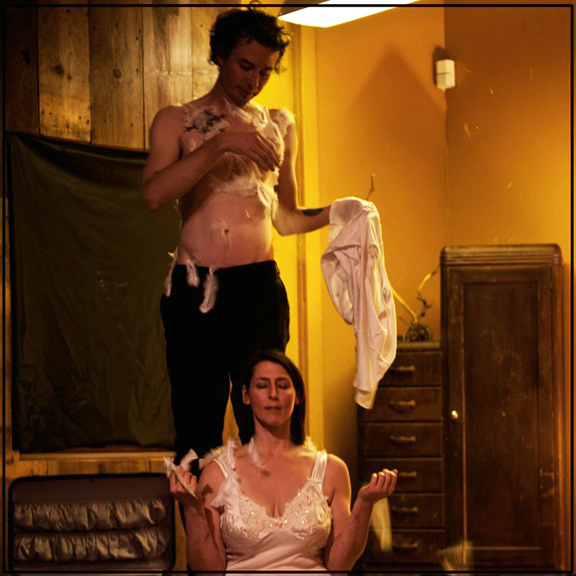
Because She Called Him Honey, Ann Arbor, Michigan, 2010, photo by Lisa Steichmann
You are currently residing and working in Detroit. Do you see any significant differences between the approach and concerns of Michigan artists to those found in Chicago?
I don’t think I’m actually in a position to answer this question, yet. We have only actually been producing work for sites in Detroit over the last three years and only living there for part of the week over the last year. We bought our space — we call it Light Box — from a church on the West Side of Detroit last year. As newcomers we are still very wary of being put into the position of an “expert” on a place. Just because we bought real estate doesn’t mean we know all that much, yet.
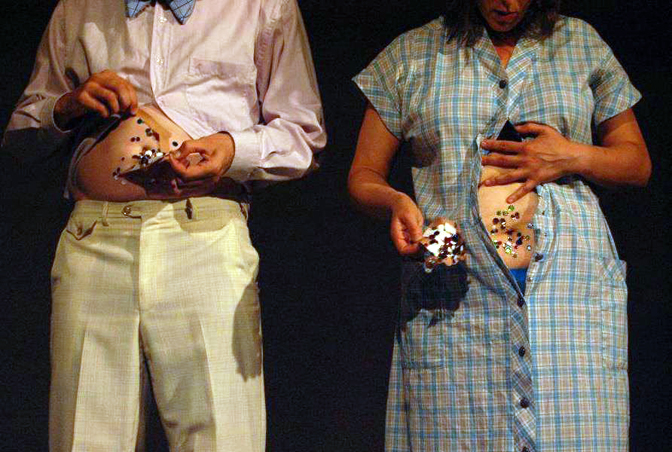
Baroque Blue Bellies, Dances to Songs I Hate, Links Hall, Chicago, 2012, photo by Ngozi Ekeledo
I would describe you as a rather physical and intensive artist. In much of the work I have been introduced to over the years I’ve experienced a corporal and ephemeral sense in your investigations. What draws you to the fleeting nature of performance?
While thinking about this question I was considering the fact that I moved every two years for the first eighteen years of my life; wondering if performance art didn’t start for me through the letting go of and replacing of all of my objects over and over again. The choosing of the objects always felt very important but the release of them was always very easy. A far as the physical practice is concerned, my family is physical — my mother is a jock, my father was an engineer and mechanic, so relating bodily to the world was second nature. Words have never been a way for me to negotiate the world. I am dyslexic and learned to navigate things through images and acts.
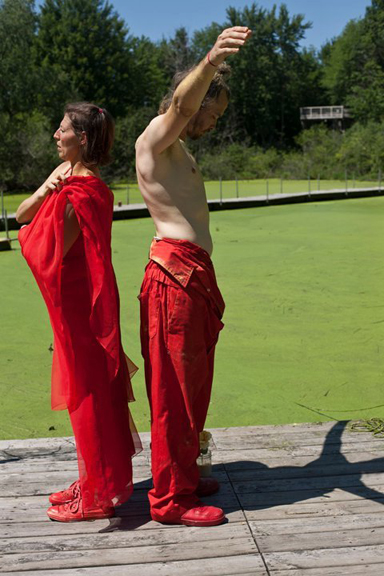
Everything I Want is Small, SiTE:LAB, Grand Rapids, Michigan, 2011, photo by Lisa Steichmann
What specific issues in contemporary art practice pique your interest?
I don’t know if this is a particular issue, but I’m interested in the practice of working across media. Artists who are making drawings, videos and performances seem to be the ones to whom I’m most attracted; and artists brave enough to work in a medium outside of what they’re trained in. Joan Jonas of course fits this category, (but perhaps that’s not such contemporary practice). I’m really happy that performance art — which is what I was trained in and chose because it felt as though it had the largest umbrella — seems to having a resurgence in popularity.
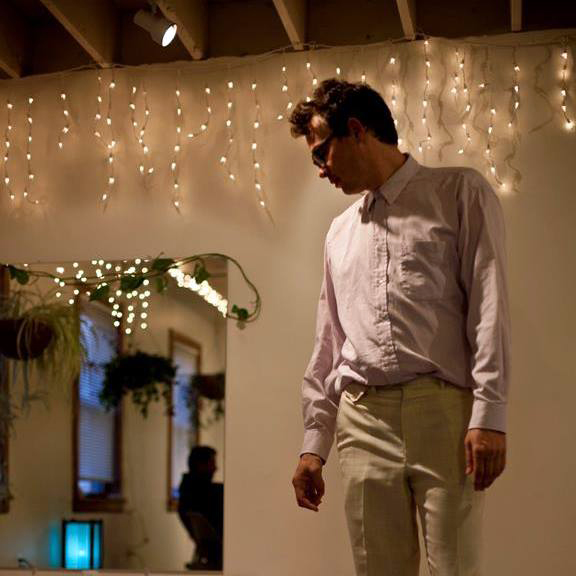
Sewing Circle Baptism, Ann Arbor, Michigan, 2012, photo by Lisa Steichmann
Are there specific projects that you are currently working upon? Any upcoming performances?
The project that seems to be taking the majority of my time and brain space is the space, Light Box that I started with my partner, Stefanie. The main performance space is a 1500 sq. ft former Baptist church sanctuary in a building that was originally built in the 1920’s as a bank. This undertaking, we joke, is our unofficial Master’s degree in arts administration. Which means that we spend as much time talking about the roof and toilets as we do about audience generation. However, as curators we do have the opportunity to dive into the nuts and bolts of the work of other artists; to see and participate in the real work and everydayness of art-making, which seems to unfold over a meal, during late-night conversation or while getting ready to go out after rehearsals.
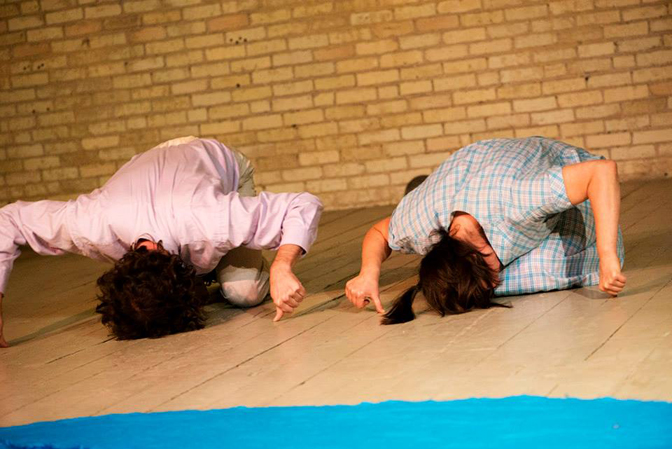
Baroque Blue Bellies, Mazomanie, Wisconsin, 2012, photo by Mick McKiernan
As Upended Teacups we have been reconnecting with a long-standing, and sometimes back-burnered research-based piece around ecstatic and religious themes. We are currently reading The Varieties of Religious Experience by William James and mimicking the movements of snake handlers from the television show “Snake Salvation” — this with a little bit of break dancing thrown in, because I’m pretty sure that’s where we’ll find God. This is a devised performance that will include an evening-length piece and a few installations (sound and sculptural) that accompany it, and it will be the first performance of our work in our own space.
Lastly, I have started working on an endurance drawing project that is a form of meditation or stimming but I keep having performance ideas while I’m doing it.
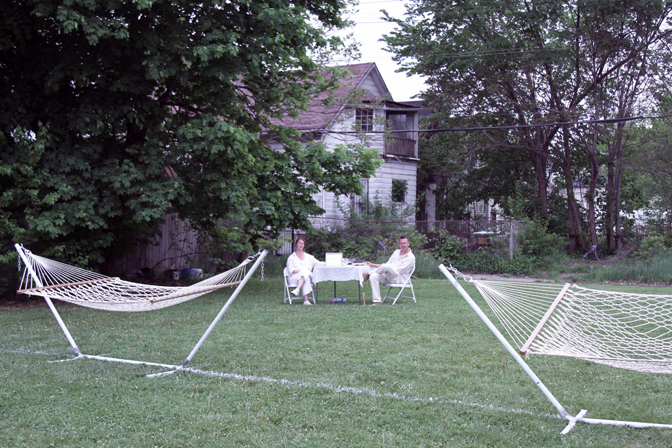
Turn Sway Jump Pray, Porous Borders Festival, Detroit, Michigan, 2015 photo by Oren Goldenberg
To view additional works, please visit the links to Upended Teacups and Light Box facebook pages:
Upended Teacups – https://www.facebook.com/pages/Upended-Teacups/135193736552398?fref=ts
Light Box – https://www.facebook.com/pages/Light-Box/798632493537323?fref=ts
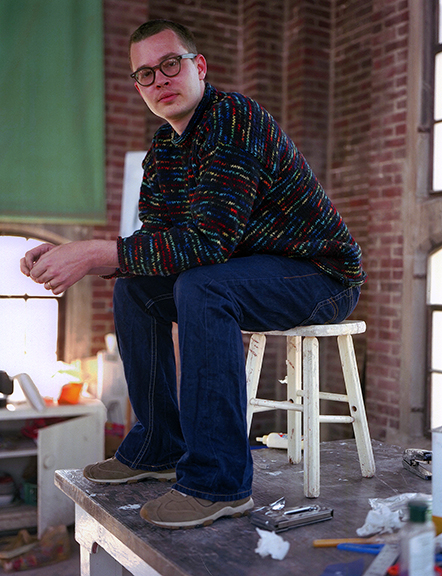
Corey Gearhart, artist, Joliet, IL, 2003
Interview and portrait by Chester Alamo-Costello


